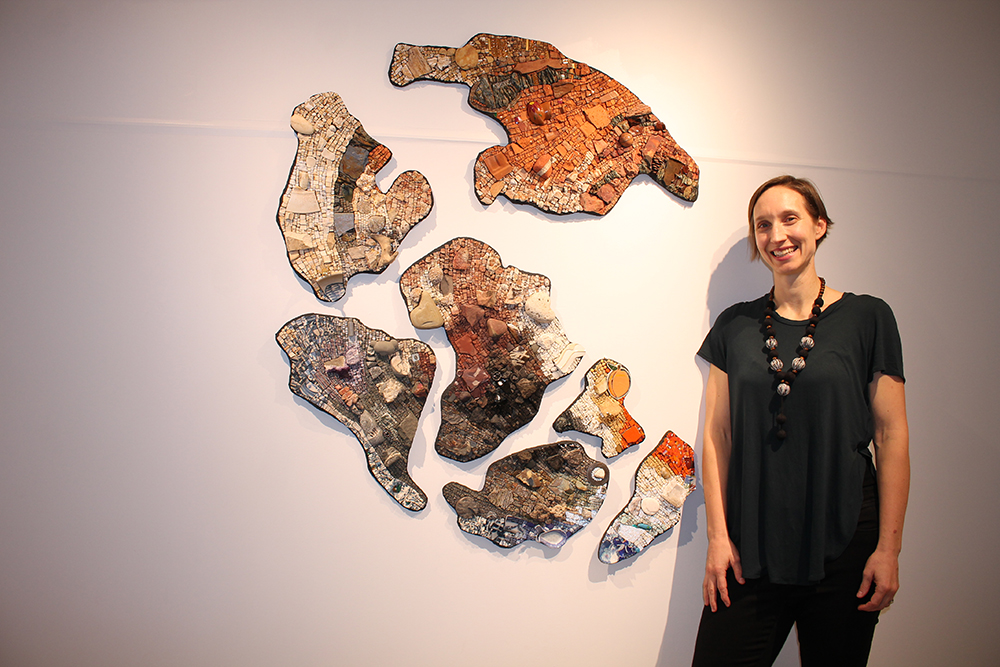A mosaic artist, who “moonlights” as a public servant with Environment and Climate Change Canada, has brought the latest exhibition to the Agnes Jamieson Gallery in Minden.
Julie Sperling’s “By Our Own Hands” is a commentary on the Anthropocene era, “where humans are the driving force now shaping the planet … not in a good way,” she said during an artist’s talk last Friday night.
Mosaic artists traditionally use stone, glass and ceramics in their work, but Sperling said she likes to forage for contemporary materials. They tie in well with her climate change-themed work.
“Anything is fair game for me … it could be my recycling bin, it could be the side of the street, it could be the lakeshore. That I find much more inspiring than going to the store and buying a tile or going to the store and buying a marble,” she said.
She incorporates her finds into her mosaics along with traditional materials. For example, one work features an upside-down whale skeleton made completely of plastic and a bit of a can of spam.
Her main piece, which looks like Pangea (pictured above) is made of pieces contributed from people around the world. She said the intent was to get people to share things of significance to them because she wanted to “talk about those relationships and social bonds to help us weather what’s coming for us.”
Because of the detail in each work, Sperling said people like to spend time with her mosaics. She said her superpower is that, “I can make you slow down and interact with it. I get to create things for you to explore on so many different levels.”
She added that because she knows people spend time with her work and that it covers important subjects, “I try to walk this line between beauty and destruction. And I try not to be to be too aggressive in my work. I don’t want to turn you off, I want to draw you into this calm looking piece until you really interact with it and you realize something is a little amiss, a little bit kind of unsettling. That’s the tension I try to create and where we can have some interesting conversations.”
Gallery curator Laurie Carmount said, “There’s just so much more going on with them … and I think people are really taken by them.”





